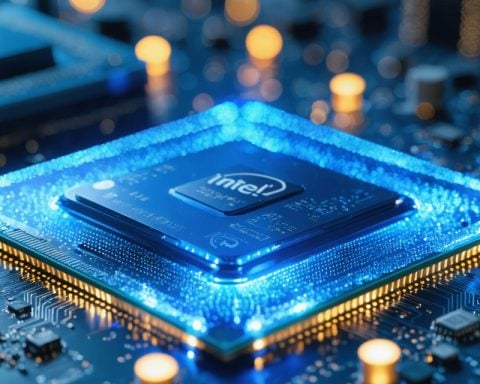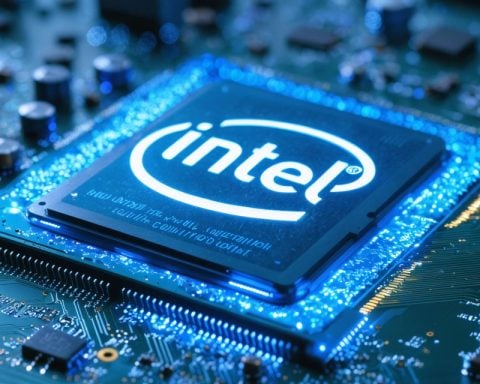As companies embrace the potential of artificial intelligence (AI) for their business operations, the landscape of AI workloads is undergoing a significant shift. Traditionally, AI workloads have been processed in data centers, requiring specialized and expensive hardware for training models. However, as the field of AI matures, there is a growing trend towards inference-based workloads and optimization of existing models. This shift is opening up new opportunities for AI as a service, provided by major cloud service providers.
In the data center, there is an emerging trend of utilizing traditional servers for AI workloads. This move towards more cost-effective solutions presents a significant advantage for established players in the data center business. As newer and more efficient modeling methods are developed, traditional servers can handle these workloads with a favorable cost/performance ratio and greater compute availability. This eliminates the need for companies to make major capital investments in expensive hardware that is only required for training purposes.
Meanwhile, edge computing is poised to become the primary destination for AI workloads in the near future. The edge encompasses a wide range of systems and processing capabilities, from small sensor arrays to autonomous vehicles and medical diagnostics. This migration towards edge-based systems offers numerous benefits, including reduced latency, improved security, and increased efficiency.
To support the thriving ecosystem of edge computing, open-source platforms and development environments are expected to play a pivotal role. Unlike proprietary solutions, such as Nvidia’s CUDA, open and compatible ecosystems like Arm and x86 offer compatibility across various computing needs. This flexibility enables easy scaling and porting of solutions, facilitating seamless integration of AI workloads from small-scale devices to large-scale computing environments.
The rapid growth of the Internet of Things (IoT) has created an additional need for scalable solutions in the edge computing space. With IoT, devices are often smaller and operate on lower power, making it crucial to establish an open ecosystem that can cater to these specific requirements. As such, the collaboration between open-source platforms and the expanding IoT industry holds great potential for driving innovation and further advancement in the field of AI.
In conclusion, the landscape of AI workloads is shifting from traditional data centers to edge computing environments. While data centers continue to serve an important role, the rise of inference-based workloads and the optimization of models are driving a demand for cost-effective solutions. The edge, with its diverse range of systems and processing capabilities, is emerging as the future hub for AI workloads. As this transition unfolds, open-source platforms and development environments will play a critical role in facilitating compatibility and scalability across the AI landscape.
Additional Facts:
1. Edge computing refers to the practice of processing data near the source rather than sending it to a centralized data center, thereby reducing latency and improving real-time decision-making.
2. The increasing popularity of AI in industries such as healthcare, manufacturing, and transportation is driving the need for edge computing solutions to handle the large volumes of data generated.
3. Edge computing allows for faster response times in critical applications like autonomous vehicles and industrial automation, where real-time processing is crucial.
4. Major cloud service providers like Amazon Web Services (AWS), Microsoft Azure, and Google Cloud are expanding their services to include AI capabilities at the edge, making it easier for businesses to adopt and deploy AI workloads.
5. The shift towards edge computing also brings challenges in terms of managing and securing data at distributed locations, as well as ensuring interoperability between different edge devices and platforms.
Key Questions and Answers:
1. What is the main advantage of using traditional servers in data centers for AI workloads?
– The use of traditional servers allows for cost-effective handling of AI workloads with a favorable cost/performance ratio and greater compute availability, eliminating the need for expensive specialized hardware.
2. Why is edge computing considered a favorable destination for AI workloads?
– Edge computing offers benefits such as reduced latency, improved security, and increased efficiency, making it suitable for applications that require real-time processing and decision-making.
3. How can open-source platforms contribute to the growth of edge computing in AI workloads?
– Open-source platforms provide flexibility, compatibility, and scalability across various computing needs, enabling seamless integration of AI workloads from small-scale devices to large-scale environments.
Key Challenges or Controversies:
1. Security and privacy concerns arise with storing and processing data at the edge, as it may be vulnerable to breaches or unauthorized access.
2. Ensuring interoperability and compatibility between different edge devices, platforms, and AI frameworks can be a challenge in a heterogeneous ecosystem.
3. Balancing the trade-off between processing at the edge versus in centralized data centers requires careful optimization to achieve the desired performance and cost efficiency.
Advantages:
– Reduced latency: Processing data at the edge enables faster response times and real-time decision-making.
– Improved security: Edge computing can enhance data security by reducing the need to transmit sensitive information to centralized data centers.
– Increased efficiency: By processing data closer to the source, edge computing reduces network traffic and optimizes resource utilization.
Disadvantages:
– Limited compute resources: Edge devices often have constraints in terms of processing power, memory, and storage capacity.
– Maintenance and management complexities: Distributed edge infrastructure requires effective monitoring, maintenance, and updates to ensure seamless operation and security.
– Interoperability challenges: Integrating various edge devices, platforms, and AI frameworks may require additional effort to ensure compatibility and collaboration.
Suggested Related Links:
1. IBM Automotive – AI and Autonomous Vehicles
2. Microsoft Azure – Internet of Things
3. Amazon Web Services – Edge Computing



















